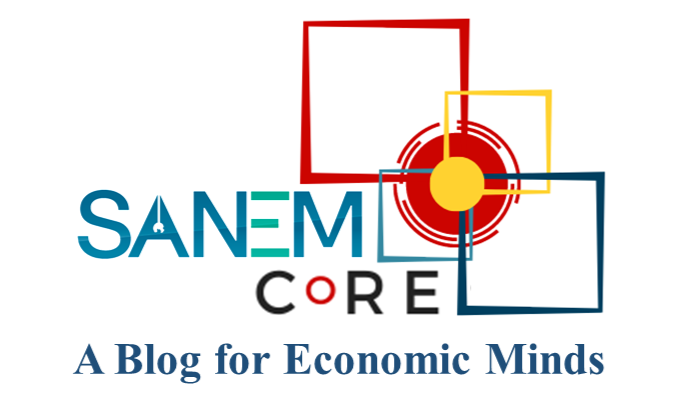The Government of Bangladesh unveiled its long-awaited Health Reform Commission (HRC) Report—an ambitious document envisioned for laying the foundation for a more equitable, efficient, and accountable health system. With over 70 percent of out-of-pocket health expenditure, having health spending still below one percent of GDP, the country’s health sector remains persistently underfunded, fragmented, and inequitable. Consequently, the medical tourism continues to surge—especially for specialized care—underlining the population’s eroding trust in-country health services and the health system’s inability to provide quality care at scale. The HRC was therefore expected to deliver more than just identifying the core and persistent challenges; it was expected to deliver a bold, actionable path toward Universal Health Coverage (UHC).
Admittedly, the report acknowledges many of the structural weaknesses that have long plagued Bangladesh’s health system. It suggests free primary healthcare, the scaling up of midwifery-led maternal services, pilots of social health insurance using innovative financing sources such as corporate social responsibility (CSR) allocations and six tax including tobacco taxes.
The major suggestions include making primary healthcare a constitution right which is binding rather than the current strategy of non-binding. Even though it may appear a little philosophical change, it has obvious and longstanding consequences. If acted upon, this would mark a transformative shift in how health is positioned within national development priorities—from an aspirational goal to a legally protected right. In addition, the formation of permanent health commission which play an instrumental role is another significant and welcome proposal.
However, the report falls short in several fundamental areas. While the reforms proposed are numerous and well-intentioned, they appear disjointed, lacking a sequential roadmap that connects goals to measurable actions. The result is an impression of a laundry list of reforms rather than a coherent transformation strategy. Although the report refers to time-bound activities, it lacks in offering much needed prioritization.
One of the report’s most glaring omissions is its limited engagement with the private health sector. Despite delivering major part of the healthcare services in Bangladesh, private and informal providers are treated as peripheral actors in the reform agenda. The document makes passing references to pharmaceutical regulation but does not tackle deeper structural issues such as dual practice by public-sector doctors, the unregulated proliferation of diagnostic centers, and rampant referral commissions that inflate costs and incentivize overuse.
The financing proposals, while innovative on the surface, are problematic in both scale and sustainability. CSR funds and tobacco taxes may be politically attractive and symbolically potent, but they are unlikely to offer reliable, long-term funding for core health functions. CSR allocations are limited in scope and often maybe better earmarked for other development priorities such as disaster relief or education. Tobacco tax revenues, while potentially significant, fluctuate and are not inherently earmarked. The report also fails to propose a viable tax reform strategy or outline how Bangladesh might transition toward pooled public financing.
The report cites global examples like Thailand, Sri Lanka, and Ethiopia but lacks contextual analysis. It overlooks how these models succeeded through proper sequencing, strong governance, and political continuity—factors missing from Bangladesh’s current framework.
Equity concerns are also insufficiently addressed. Key service areas such as mental health, elderly care, and early childhood development receive only marginal mention.
To advance the reforms, the government should form inclusive task forces for each core area—governance, service delivery, HR, digital health, and financing—engaging experts beyond bureaucracy. A Health Reform Implementation Council, led by the Health Ministry and involving key ministries, should oversee coordination and assess fiscal implications with public finance specialists.
Another pressing need is addressing the “missing middle”—those who are too well-off to qualify for safety nets yet too poor to afford private insurance or high out-of-pocket payments. This group, which often includes urban informal workers and lower-middle-class families, remains invisible in the current reform agenda.
While the report makes a number of critical proposals on the supply side—such as facility readiness, workforce recruitment, and digital infrastructure—it pays insufficient attention to the demand side of health system reform. Ensuring that people not only have access to services but are also motivated, empowered, and informed to use them is crucial for realizing UHC.
Bangladesh’s own experience with demand-side financing tools, particularly the maternal health voucher scheme, demonstrated how targeted incentives can increase service utilization among the poor and marginalized. It also overlooks behavioral nudges and community-based empowerment strategies—approaches that have been proven globally and locally to drive uptake of preventive services, improve adherence to treatment, and strengthen accountability.
Without such structured follow-up, even the most well-crafted ideas risk becoming just another document. Though the document can be a good starting point, quick fixes, or hybrid though of fixing and reforming, will no longer suffice.


RECENT COMMENTS